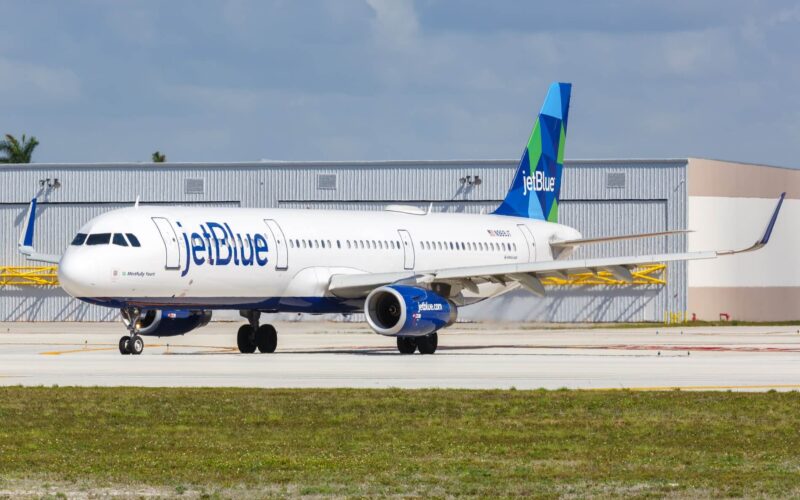This is the second article about JetBlue (JBLU)’s potential transatlantic flights. The first article is available here:
The prime days of the hub-and-spoke model have been slowly fading across the globe. At first, point-to-point was mostly facilitated by low-cost carriers, and later on, by their legacy counterparts, began to rise.
The technological progress, combined with a potentially larger consumer base, facilitated the growth of even long-haul point-to-point flights. The newest generation of wide-body aircraft, namely the Airbus A330neo or the A350 and the Boeing 787 Dreamliner family, introduced unprecedented economics into the industry. Airlines are now able to fly further and much cheaper than if they were to utilize the Airbus A380 or the Boeing 747, which can be quite a challenge to fill to a satisfactory profit level.
In addition, both players of the duopoly introduced narrow-body aircraft that can fly much further than their counterparts. If the Boeing 737-900ER, the furthest flying member of the Next Generation family, was able to reach destinations up to 5,460 kilometers (2,950 nautical miles), the 737 MAX 7 is able to fly as far as 7,130 km (3,850 nmi). Airbus’ own A321 went from a range of 4,083 km to 5,930 km with the A321neo. The A321LR, based on the neo, went a step further with 7,400 km – finally, the A321XLR will be able to reach destinations as far away as 8,700 km.
The newest single-aisle aircraft are now able to match the Boeing 757, which was vastly under-appreciated during its active production timeline. For a short while, the 757 was able to resurrect itself as a point-to-point traffic facilitator amongst top U.S. carriers.
Rising popularity
The popularity of direct flights is only on the rise. Traditionally associated with its Dubai International Airport (DXB) hub, Emirates had an equal 50-50% split on point-to-point and transfer operations, according to the airline’s chief operating officer Adel Al Redha. Prior to the pandemic, the number was 70-30, favoring passengers transferring through DXB.
The most glaring example of the rising popularity of direct flights replacing hub transfers was the wave of hype that Qantas surfed on its Project Sunrise trial flights. The project was supposed to connect Sydney with New York and London directly, allowing customers to avoid transfers in Perth, Hong Kong, Dubai, or any other hub in Asia-Pacific.
JetBlue (JBLU)’s flights will also, to a certain extent, add to the popularity of direct flights. While the leisure passenger-focused airline will possibly look at tapping into business travelers with flights to London, its unique position to offer cheap flights to leisure passengers across the pond is undoubtedly beneficial. Especially in the current environment. Offering cheap and direct flights, as travelers are wary of large and overcrowded spaces, in addition to a crumbling economic situation, would shoot down two birds with one engine for JetBlue (JBLU).
Opportunities to expand throughout Europe without overextending is also on the table. The airline’s order book, which includes the A321LR and the A321XLR, will provide plenty of options to tap into leisure-focused markets across Europe from New York and Boston. Fort Lauderdale, Florida, is a bit of a problematic location without the A321XLR, which would enable it to connect FLL with a fair few destinations in the Mediterranean.
Its partnership with American Airlines (A1G) (AAL) will also help feed the planned and any potential destinations across the pond. The partnership, announced in July 2020 and pending approval from the authorities, will focus on expanding both airlines’ presence in the U.S. Northeast, including New York and Boston. However, JetBlue (JBLU) will not join oneworld alliance or the AJBA, which will only ease the process for the carrier to expand throughout Europe. At the same time, American Airlines (A1G) (AAL) can offer its leisure-focused customers wishing to travel across the pond a seamless connection with a much lower price, while AA itself focuses on bringing in the upper-market traveler. JetBlue (JBLU) would only increase its scope of potential passengers, as the two will codeshare their flights.
“Leisure travel is important to our customers, and JetBlue (JBLU)’s network paired with their award-winning service, are the perfect fit,” stated Chief Revenue Officer (CRO) of American Airlines Vasu Raja.
Nevertheless, JetBlue (JBLU) will have a plethora of opportunities to expand on its own with both of the extended-range A321neo versions. Destinations from Spain’s most popular resorts to Italy’s romance-filled cities will be available to customers in the U.S. East Coast. The airline would not sacrifice too much of its resources in order to cater, or in some form create the demand by flying Airbus’ narrow-bodies across the pond.
“We anticipate the need for JetBlue (JBLU)’s low fares and exceptional service – particularly on transatlantic routes dominated by a handful of mega-carriers charging high fares – will be more needed than ever once the market recovers from the impact of coronavirus,” concluded the airline’s spokesperson.

